Explosive growth
Between 1979 and 2019 Shenzhen’s gross domestic output grew to 2.69 trillion yuan, or roughly US$390 billion. That’s an annual rate of 21.6 per cent. In 2018 the city’s GDP was US$370 billion while Hong Kong’s came to US$360 billion based on that year’s official exchange rate, meaning Shenzhen’s economy surpassed Hong Kong’s for the first time. In comparison Hong Kong had a GDP of US$28.9 billion in 1980 and the second-largest stock exchange in Asia, behind only Tokyo.
Gross domestic product (US$ billion)
FOREIGN DIRECT INVESTMENT
FDI drove Shenzhen’s early economic development with much of that funding coming from Hong Kong. In 2019 Hong Kong received US$53 billion in FDI, falling nearly 50 per cent compared with a year earlier due to the recent social unrest which has been compounded by the pandemic.
FOREIGN TRADE
In recent years Shenzhen’s imports and exports have been powered by the city’s booming hi-tech enterprises. In 2018, foreign trade volume of the southern Chinese metropolis increased by 7 per cent to 3 trillion yuan (US$442 billion) catapulting 12 private companies into the top 100 foreign trade enterprises in China.
Hong Kong however, has been recording trade deficits since the late 1990s, as imports grew more than exports. Until recently, the city has been reluctant to invest in innovative technology or other emerging industries and continues to rely on its core industries of finance, shipping, tourism and professional services despite diminishing returns.
WHOLESALE AND RETAIL SALES
Shenzhen’s consumer market is big. Very big. In 2018, total retail sales of consumer goods amounted to 616.9 billion yuan (US$90.3 billion), up 7.6 per cent from the previous year, compared to Hong Kong’s HK$485.2 billion (US$62.61 billion).
Percentage contribution to GDP by wholesale and retail sales
INITIAL PUBLIC OFFERING
China is trying to adapt legislation to make it easier for tech start-ups to go public. ChiNext, a Nasdaq-like board launched a decade ago in Shenzhen, is home to 807 companies, with a total market capitalisation of 6.78 trillion yuan (US$958 billion). It recently debuted new rules to allow companies to participate in an IPO registration system much like public listings in the US.
Hong Kong remains the king of IPOs but has also been tweaking its IPO legislation after missing out on Alibaba in 2013 which was forced to list in the US instead.

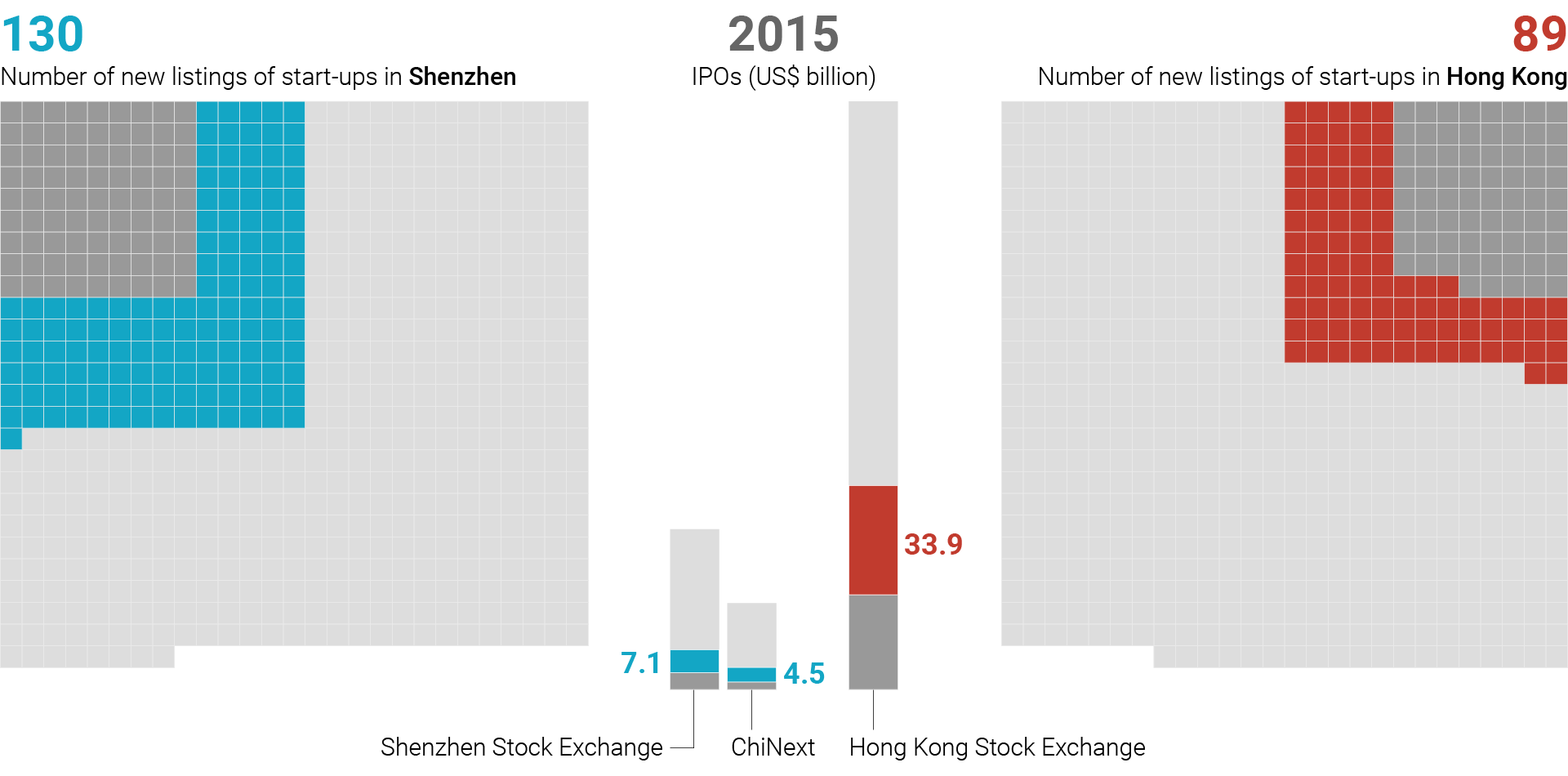
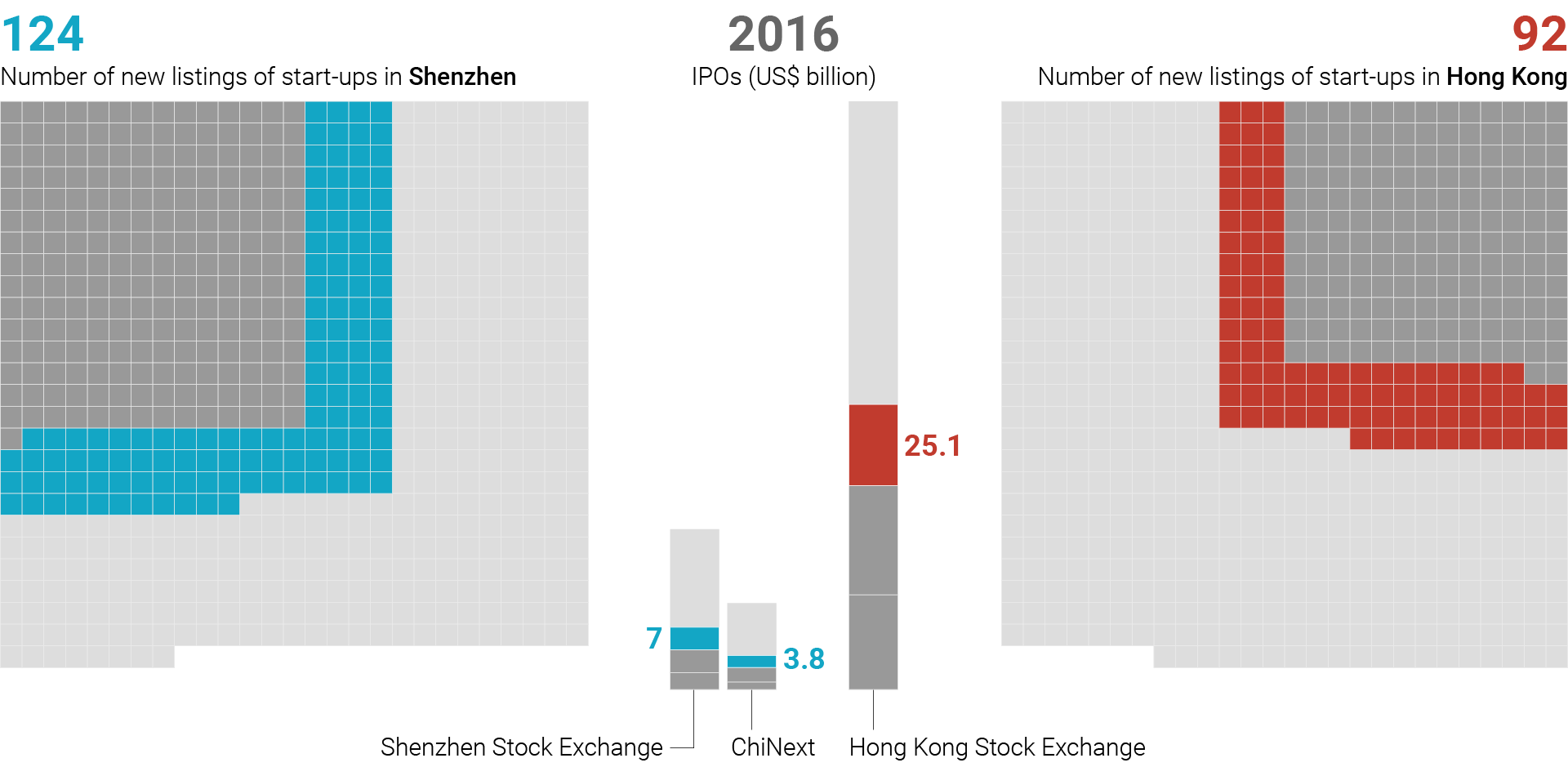
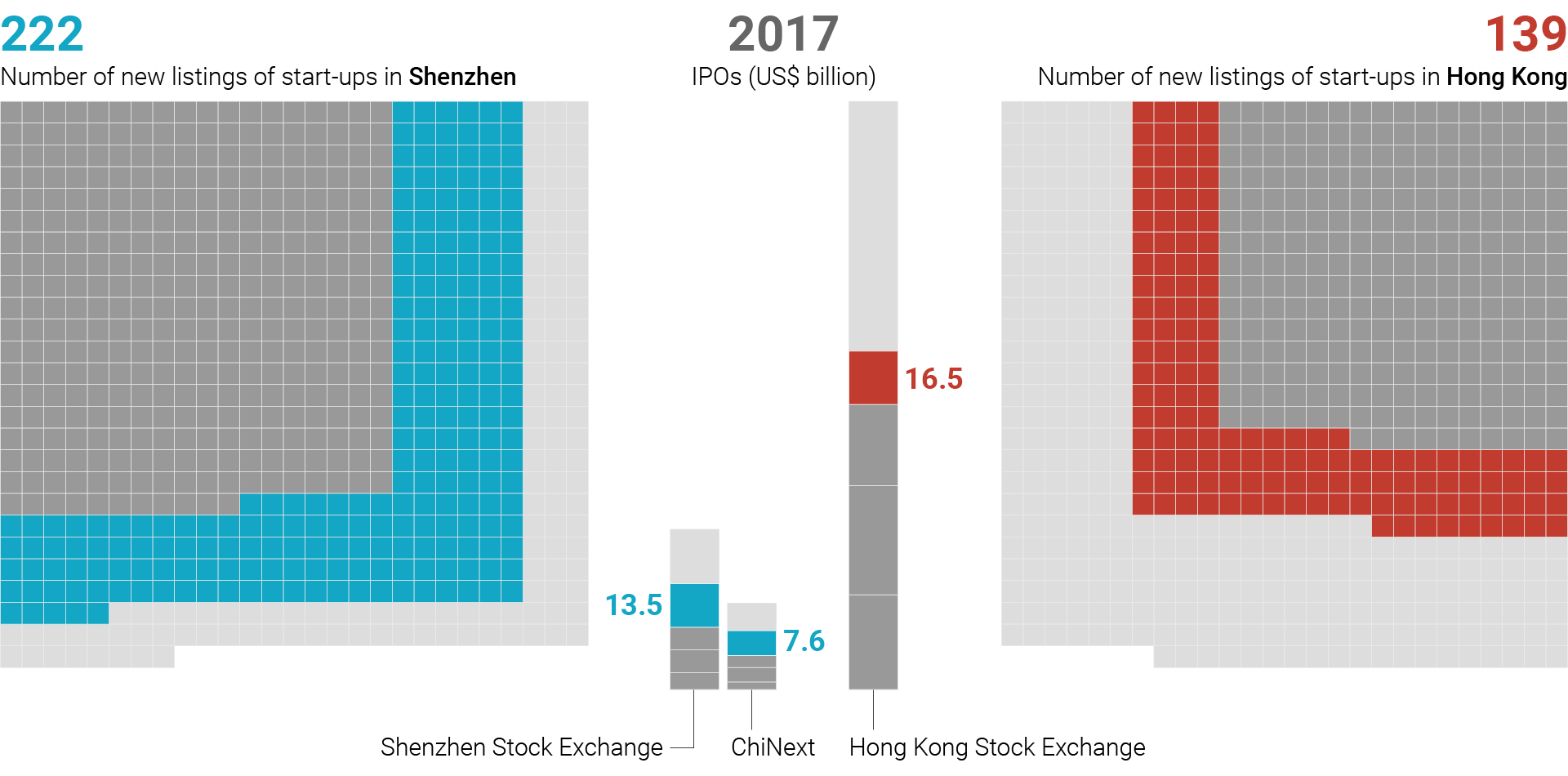
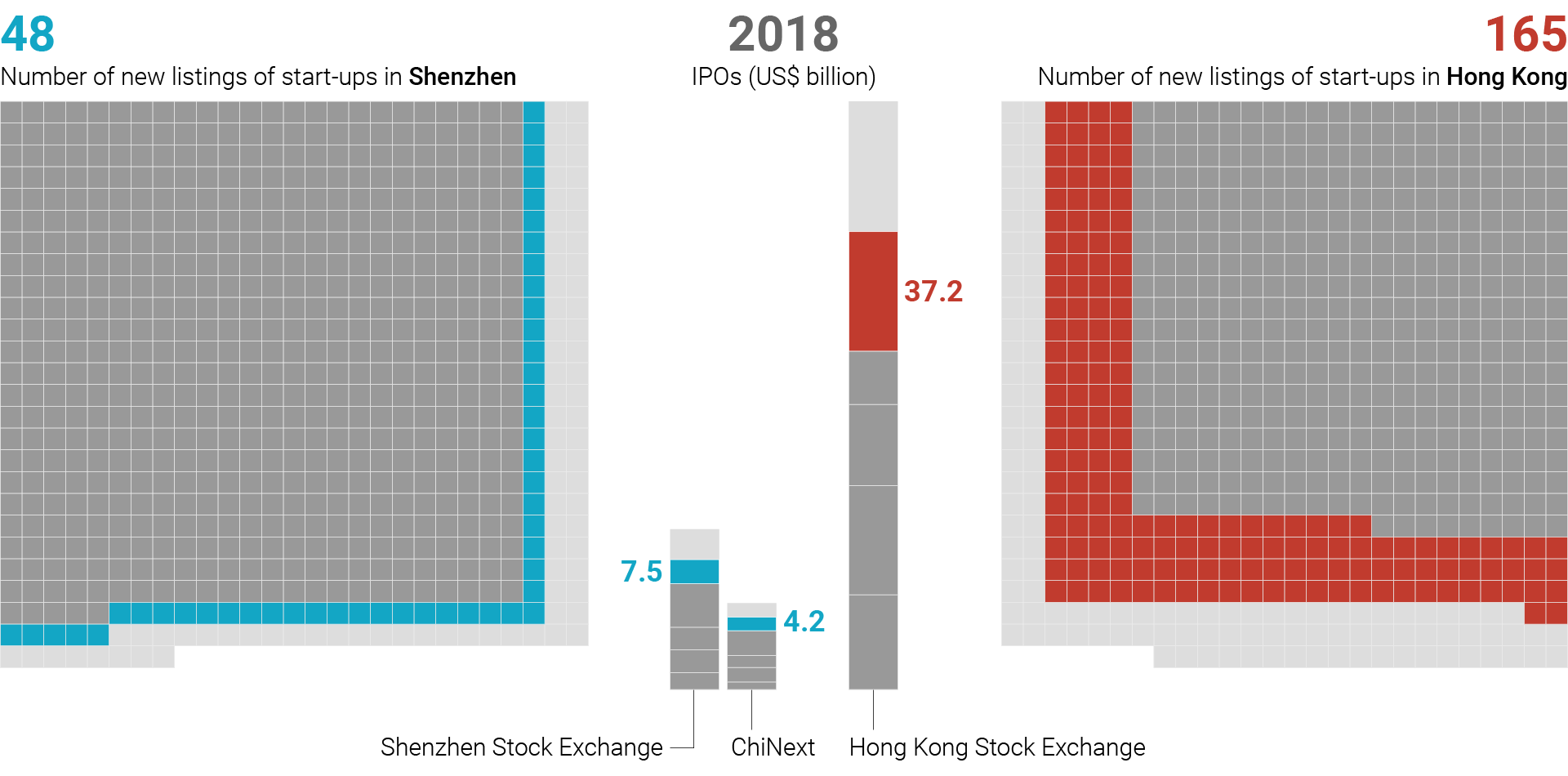
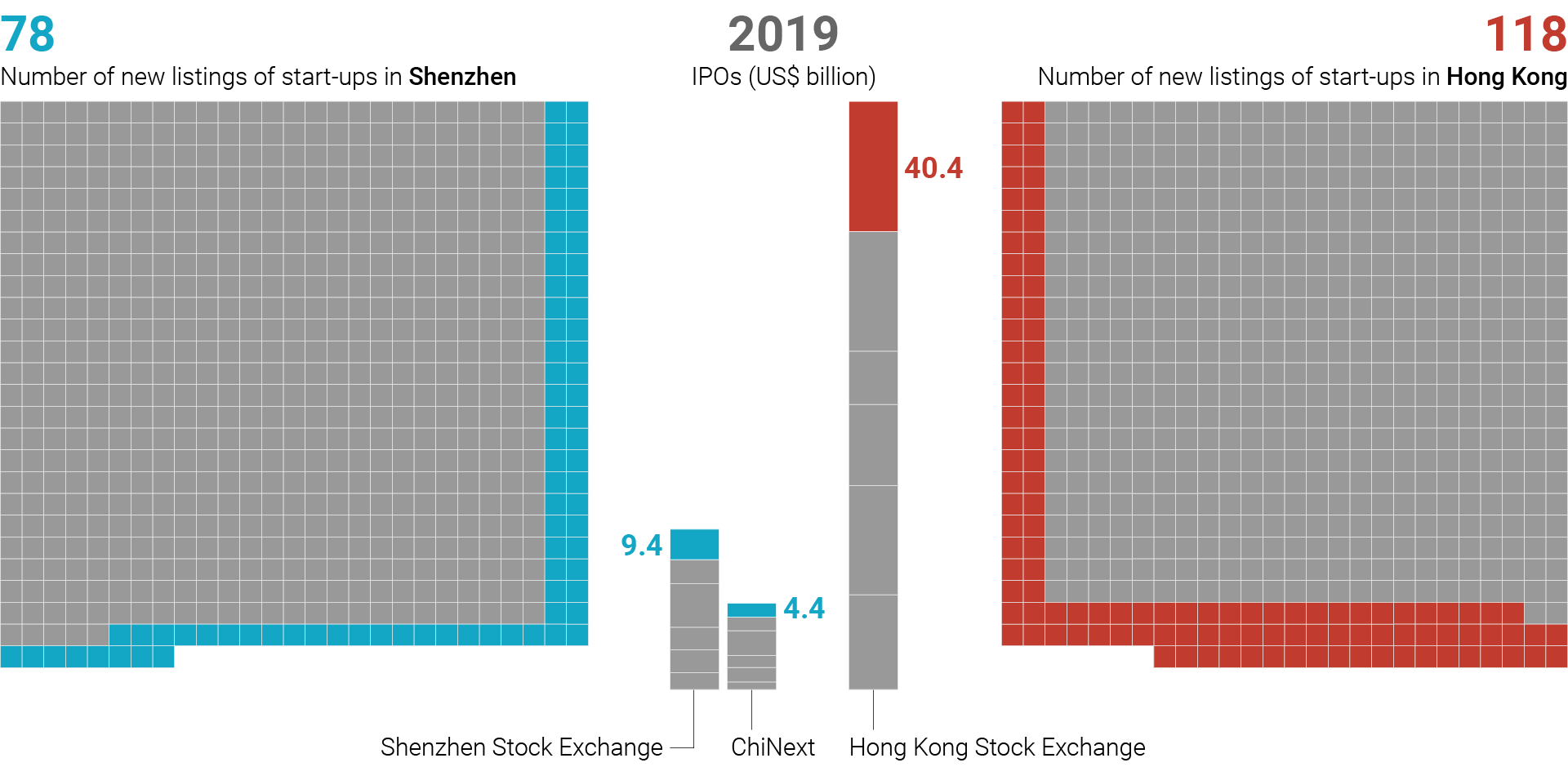
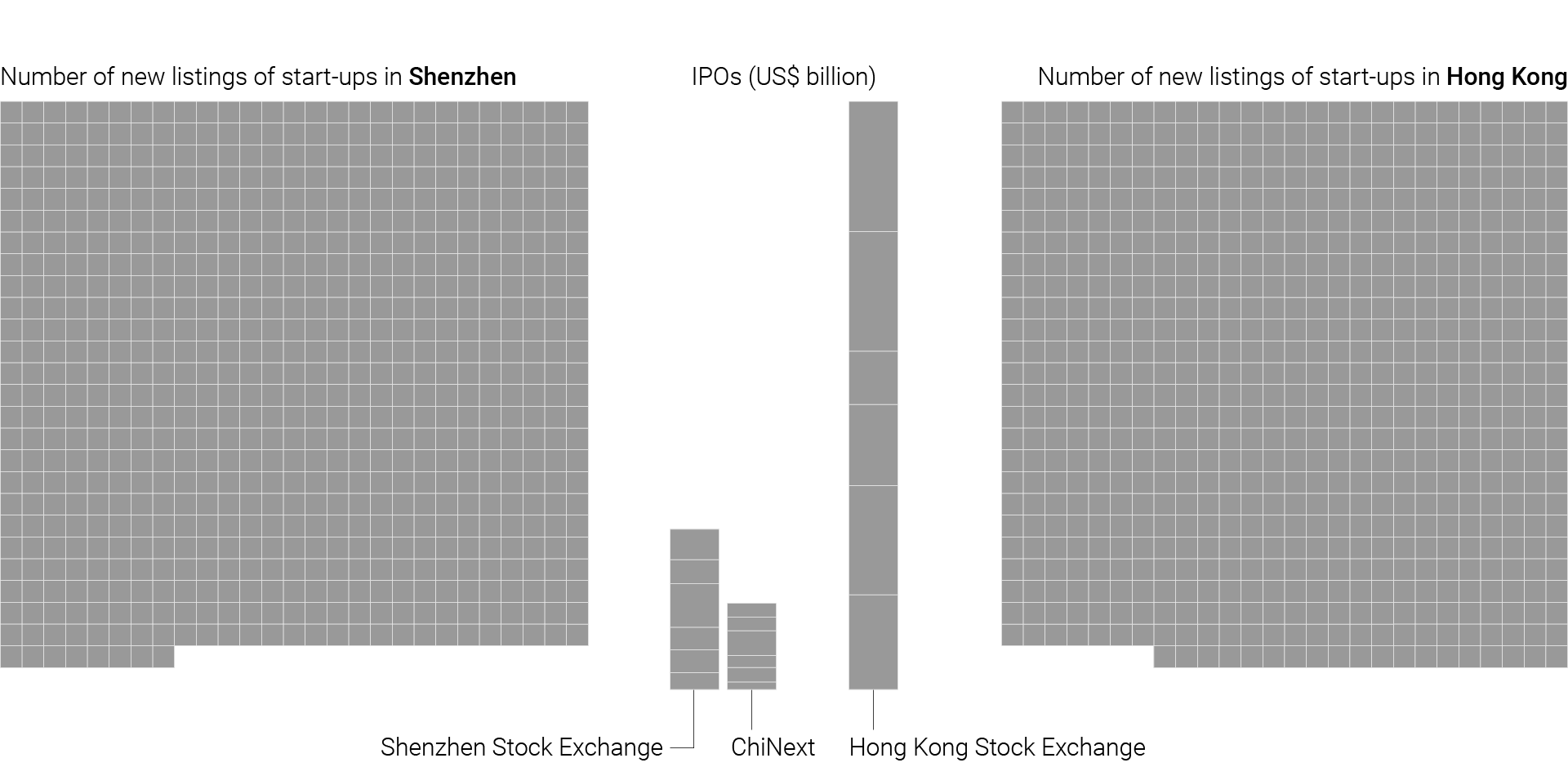
Hi-tech
Shenzhen’s hi-tech industrial development zone was set up in September 1996, originally occupying 11.5 sq km of land. Last year the government announced plans to expand the zone to 159.5 sq km to house an additional 2,000 hi-tech enterprises. The hi-tech industrial estates contributed 34 per cent of Shenzhen’s GDP in 2018.
Key industries in Shenzhen
WHY SHENZHEN?
Being a special administrative region brings with it tax incentives and special policies and regulations; The Special Economic Zone policy allows foreign capital access to the Chinese market, offers benefits to the overseas investor, including a reduced level of taxes and exclusive regulations for foreign direct investments. It also helps those companies that have not been able to obtain profits through tax exemption, when the company becomes profitable, it can pay reduced taxes in the next five years.
Shenzhen is widely regarded as China’s Silicon Valley. Tencent, which owns WeChat and social networking platform QQ was founded in Shenzhen. Other hi-tech companies headquartered there include BGI (China’s largest genome company), BYD (electric cars and buses), Shunfeng (electronic commerce) as well as ZTE and Huawei (telecommunications).
Shenzhen has held the country’s No 1 spot for registering the most patents over the past decade. In 2017, Shenzhen companies filed almost 20,000 applications, about half of all the patents in China outperforming Hong Kong companies, which only filed 13,299 applications that year.
To help entrepreneurs identify successful businesses and trial products before starting mass manufacturing, the Shenzhen government offers workshops incentives to prototype, test and validate new products in the dynamic local market.
Thanks to the city’s creative and innovative environment there are an estimated 10,000 local start-ups. The city’s workforce is well-educated, well-trained and with an average age of 33, it is native to digital technology.
The map below is based on an official government document of Shenzhen’s hi-tech industrial estates from 2009-2015.
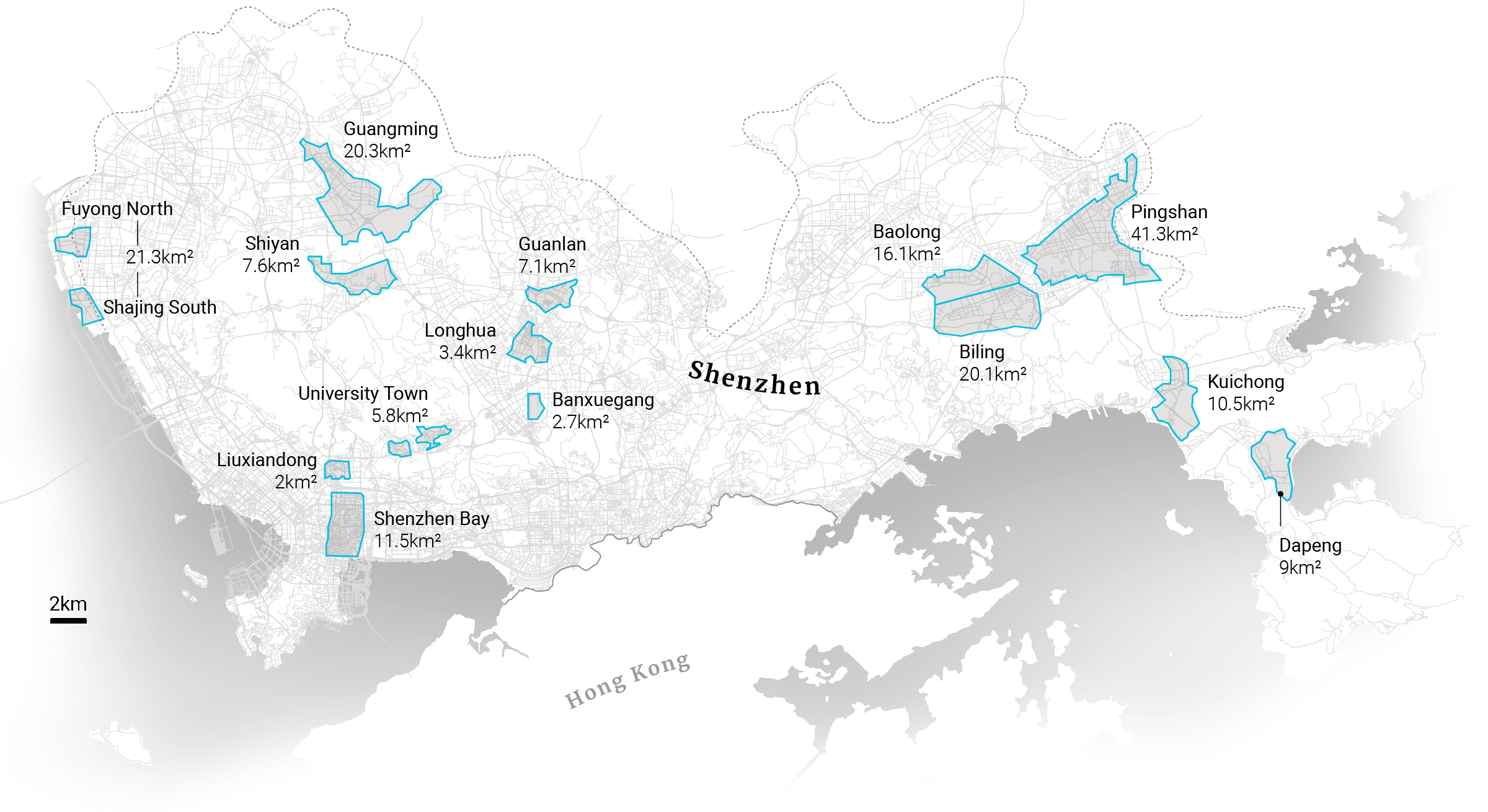
An upwards skyline
Shenzhen is home to the most high-rise buildings in China. Across the border, as Shenzhen continues to grow upwards, Hong Kong is building fewer and fewer skyscrapers. The government classifies about 40 per cent of Hong Kong as country parks which cannot be developed for property.
REAL ESTATE
China’s overall economy has been badly hit by the coronavirus pandemic but investment in real estate continues apace, particularly in Shenzhen where prices increased by 17 per cent. It is now one of the five most expensive housing markets in the country.
Shenzhen’s special economic status allows a more open domestic immigration policy meaning technology companies can attract top talent with young families from around China. Even Hong Kong’s real estate market seems relatively stable compared to other sectors. There has recently been a flood of mainland money investing in the commercial property market after the national security law came into effect.
Percentage contribution to GDP by real estate
SPEED OF CHANGE
Fifty-six buildings over 145 metres tall were completed in Shenzhen in 2019, only three fewer than the previous year. It is estimated that a total of 51 buildings will be completed by the end of 2020.
Four decades ago, China’s reformist leader, Deng Xiaoping, granted special economic zone status to strips of agricultural land in Shenzhen which made for less restrictive building and business regulations, as well as tax incentives for local and foreign companies. The city’s rapid evolution into a manufacturing city, and then into the nation’s hi-tech capital, has put a premium on land and ensured the city grows upwards as it adds ever more skyscrapers to the skyline.
The number of buildings over 300 metres tall in Hong Kong and Shenzhen

However, real estate market analysts warn that in China the supply of offices continues to exceed demand. In Shanghai for example, the world’s second-tallest building, the 128-storey, 632-metre Shanghai Tower completed in 2014, remains half empty.
Shenzhen is a little different from other Chinese cities in this regard because it is hemmed in to the north by a mountain range and to the south by the border with Hong Kong. The growing population between the city centre (which is concentrated along a narrow strip 6km wide) and Hong Kong is increasingly dense, with 7,400 people packed in per square metre.
Shenzhen continues to attract investment and human capital. In 2018 alone, the city of more than 16 million saw its population increase by almost 500,000 people. As integration in the Greater Bay Area continues to improve, Shenzhen has enhanced connectivity with Guangzhou, which has a population of 14 million, Foshan (7.1 million), Dongguan (8.2 million) and Hong Kong (7.5 million).
Number of high-rise buildings above 100 metres tall built in Shenzhen and Hong Kong over the last 40 years
© 2020, . Disclaimer: The part of contents and images are collected and revised from Internet. Contact us ( info@uscommercenews.com) immidiatly if anything is copyright infringed. We will remove accordingly. Thanks!


